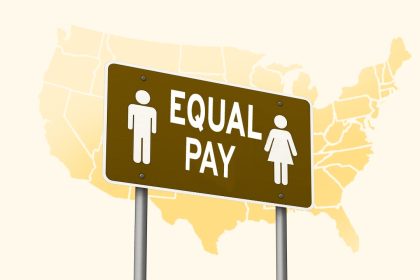Key takeaways
- Earning a welcome bonus usually requires spending a certain amount on your new card within a particular time frame, so make sure you have a plan to hit that spending target.
- Consider strategies such as prepaying some expenses, offering to foot the bill for friends, making charitable donations or simply putting all your expenses on your new card as you work toward your welcome bonus.
- It isn’t worth going into debt to earn a welcome bonus, so make sure you manage your budget well as you spend toward your goal.
If you’re interested in making the most out of your credit card rewards, it’s important to choose a card that offers a lucrative welcome bonus. The best credit card welcome bonuses give new cardholders the opportunity to earn cash back, points or miles that go well beyond the card’s regular earning rate. In some cases, the value of your welcome bonus could be enough to help you book your next flight, cover the cost of a special treat or offset an annual fee for years to come.
The caveat is that most welcome bonuses require new cardholders to put a certain amount of purchases on their credit card within a set time frame — often three to six months. This helps prevent cardholders from applying for credit cards they don’t plan to use. If you don’t put enough money on your credit card by the deadline, you won’t earn your welcome bonus.
Here is how to earn a credit card welcome bonus by hitting your minimum spending requirement, allowing you to earn the rewards you deserve.
Ways to hit your minimum spending requirement
Before applying for a card that offers a welcome bonus, make a plan for how you’re going to cover the minimum spending requirement. Calculate how much money you’ll need to spend each month, and ask yourself whether the purchases you currently plan to make with the card are likely to cover the cost.
If you aren’t confident that you’ll hit the minimum spending requirement, use some of the tips listed below to make sure you earn your welcome bonus before the deadline.
Keep in mind:
If your card charges an annual fee, that fee doesn’t count toward earning the welcome bonus. If you need to spend $3,000 to earn the welcome bonus for a card with a $95 annual fee, be sure to spend the full $3,000 and not just $2,905. Likewise, transferred balances and cash advances won’t help you cross the threshold.
Use your new credit card for all purchases
The easiest way to cover the minimum spending requirement on a new credit card is to use your new card for all of your purchases. Although spreading purchases across multiple cards can help maximize your credit card rewards, when working toward a welcome bonus, try putting all your spending on your new credit card instead.
Once you’ve hit your minimum spending requirement, you can go back to dividing your purchases between your cards and taking advantage of each card’s top-earning rewards category.
Pick up the tab for a group
Another great way to cover the minimum spending requirement on a credit card is by picking up the tab for a group. The next time you and your friends go out to eat, for example, let them know that you’d like to pay the bill. They can always reimburse you for their share of the meal through Venmo, Zelle or another peer-to-peer payment app.
If there’s a big family vacation on the horizon, you could offer to book the flights or hotels on your card and have relatives reimburse you.
Money tip:
Be sure you can trust everyone to pay their share. You don’t want to wind up paying more than you budgeted for because a friend or relative won’t pay you back.
Time your application with a big expense
Many people meet the minimum spending for a welcome bonus by timing their application with a big expense. This is a smart way to cover the costs of a vacation, but you can apply this trick to other expenses as well.
If you have a major auto repair coming up, for example, you could apply for a new credit card before the bill comes due. Put the cost of the repair on your card, and you might cover a large chunk of your minimum spending requirement in a single transaction.
Buy something big and pay it off over time
If your credit card offers an introductory 0 percent APR period, putting a big purchase on the card may also be a money-saving move. The best 0 percent intro APR cards provide at least a year of no interest on purchases, giving you the chance to hit your minimum spending requirement and pay down your balance before it starts accruing interest.
Pay your bills with your new card
If you pay your monthly bills out of your checking account, consider putting them on credit until you meet your new credit card’s minimum spending requirement. If you already put your bills on credit, consider prepaying the next month in advance.
You may even want to consider putting your rent on credit. Just make sure you pay off the balance in full as soon as you make that rent payment, otherwise you run the risk of turning your monthly rent payment into long-term credit card debt.
Watch out for additional fees when paying bills
If you decide to pay bills with your credit card, be careful about using bill payment services that charge high fees. Read the fine print and think carefully about how much the transaction might cost.
Paying bills such as tuition or taxes, for example, could wipe out an entire welcome bonus spending requirement with a single transaction, but those transactions will often come with a fee in the 1.5 percent to 3 percent range. Do the math to determine whether any fees charged make sense, given the amount of the bonus.
Let’s say you can earn 60,000 points after spending $4,000. Assuming those points are worth at least 1 cent apiece, the bonus you would earn is worth at least $600 in travel. If you pay a $4,000 tuition bill and incur a 2.4 percent fee totaling $96, you still come out well ahead in terms of the bonus’s value.
Make medical purchases that can be reimbursed with an FSA or HSA
Flexible spending accounts and health savings accounts both give you the opportunity to cover qualified healthcare expenses with money already contributed to the account. This means that you may be able to put certain types of medical purchases on your credit card and then reimburse yourself for those purchases through your FSA or HSA. Use your reimbursement money to pay off your credit card bill, and you’ll be that much closer to your welcome bonus without having to worry about unpaid medical debt.
Buy points or miles
If you plan on using your credit card to travel, buying points or miles could be a good way to hit your minimum spending requirement and prepare for your next big trip. This is especially useful if your credit card allows you to save money or earn bonuses by redeeming points or miles through a travel portal. Try to redeem any points or miles you buy as soon as possible, as card issuers can change the redemption value of their rewards at any time.
Buy gift cards
If you need to spend money to hit your credit card minimum spend deadline but aren’t sure what to spend it on, consider buying gift cards. Not only do they make excellent gifts, but you can also keep the gift cards for yourself and spend them later when you have a better sense of where you want your money to go. Buying a gift card for your favorite clothing retailer, for example, can help you out the next time you need a new outfit.
Not all issuers count gift cards toward minimum spend
American Express and Wells Fargo, for example, may not count gift card purchases toward the spending requirement. Read the fine print before applying for a new credit card, especially if you have any questions about how to earn your welcome bonus.
Make charitable donations
We all understand the importance of giving back, but not all of us remember to make regular contributions to the charities and organizations we’d like to support.
When you apply for a new credit card, take some time to make a few gifts to the nonprofits and community groups that are important to you. Not only will your gift benefit the people who need it most, but it’ll help you meet your credit card minimum spending requirement.
Add an authorized user
There’s one indirect way to meet your minimum spending requirement: Add an authorized user to your credit card. If your household is likely to have enough expenses to cover the minimum spending requirement, but you aren’t necessarily the person who makes all the purchases, consider adding your partner as an authorized user. That way, both of your shopping trips, gas purchases and everyday transactions can go toward your new credit card’s minimum spending requirement.
Keep in mind:
As the primary cardholder, you are ultimately responsible for paying back the debt incurred on the account. Plus, your credit score can be affected by the actions of your authorized user. So, if you do decide to add one to your account, make sure it’s someone you trust to use the credit card responsibly.
Pitfalls to avoid when meeting a minimum spend requirement
As you work toward your minimum spending requirement, avoid these potential pitfalls:
- Not making a plan before getting the card. If you don’t know how you plan to use your new credit card before you apply, you’ll be more likely to either miss your minimum spending requirement or put a lot of money on the card last-minute, running the risk of going into debt.
- Not starting your spending on time. The clock begins the day your credit card application is approved, not the day you receive your card in the mail. Consider using virtual credit cards or digital wallets to help you hit your credit card’s minimum spend while you wait for your physical card to arrive.
- Failing to take returns into account. Credit card issuers don’t count returns or refunds toward your minimum spending for a welcome bonus. If you end up returning any purchases while trying to hit your minimum spending requirement, make sure to subtract those returns from your minimum spend.
- Not understanding which transactions qualify. Many people don’t realize that several common credit card transactions — including annual fees, balance transfers and cash advances — don’t count toward your minimum spending requirement. Likewise, “cash-like transactions” such as gambling costs and gift card purchases may not count either. Read your credit card’s fine print so you know exactly which transactions qualify.
- Overspending and going into debt. Earning a welcome bonus is a good thing, but going into debt to earn your welcome bonus is a bad idea. The amount of money you might pay in interest charges could be higher than the value of your bonus, especially if you aren’t able to pay off your debt right away. Carrying too much credit card debt can also lower your credit score, which might make it more difficult to apply for a top credit card in the future.
The bottom line
If you want to earn a valuable welcome bonus on your next credit card, look for a card that offers an affordable minimum spending requirement and create a plan to ensure you hit your minimum spend by the deadline.
Make sure that you can pay off any purchases you make as you work toward your welcome bonus, because going into debt is often more costly than the miles, points or cash back rewards you might earn.
If you’re unsure which credit card to choose, use Bankrate’s free CardMatch tool to help you decide.
Why we ask for feedback
Your feedback helps us improve our content and services. It takes less than a minute to
complete.
Your responses are anonymous and will only be used for improving our website.
Help us improve our content
Read the full article here
















